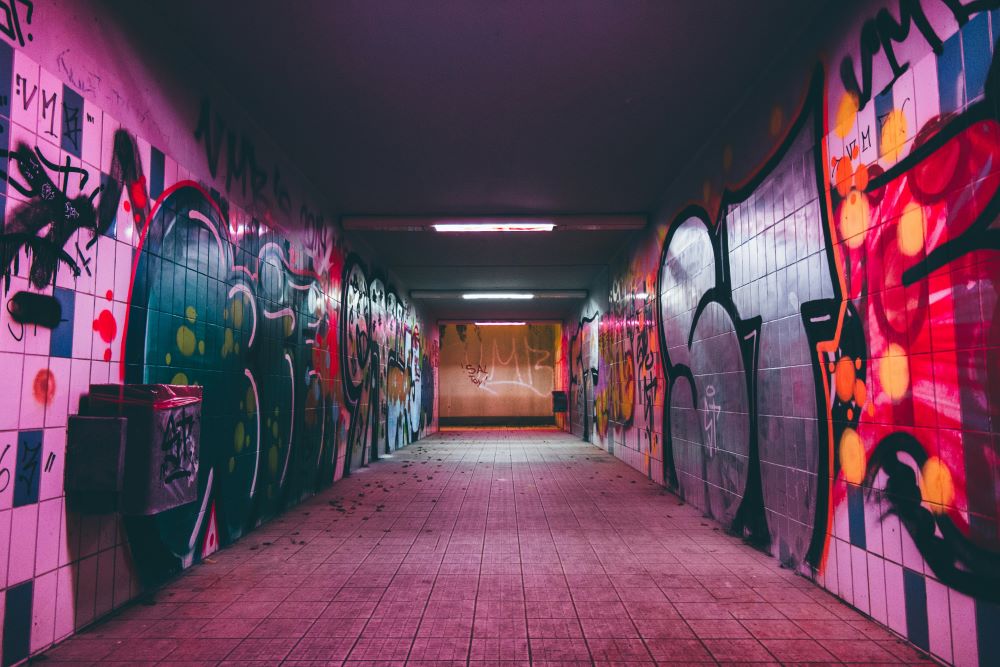Stefan Christoff works unconditionally, in all conditions, to provide what art is, and what words become. Working in Montreal, his creativity is sparked by something that is both political and artistically ingenious. The conception, with its political and creative aspects, challenges both the viewer and the creator to contemplate their rights and awareness. What they are ensuring is the bridging of the worlds between mediums of entities, of existence. Christoff has been a Montreal activist and community organizer for almost 20 years. As a street artist, he is immersed in a world that is curated by culture, but also by individuals, by people like himself who act on making a difference. As an activist, he is managing between these worlds, and through the stages of it. In the state of the political unrest in Montreal, he uses the active involvement of street art to invoke the power of people through art. This medium is both permanent and changing in its approach which allows it to be used as an effective way that can adapt to Montreal.

While this powerful method is long-lasting, they don’t last forever; but Stefan Christoff looks at that aspect in a positive way. He looks at this as a way of evolving political space “depending on where we’re at politically in the moment. “ In this way, art is what words become through immediate integral aspects of political culture. As an artist myself, looking at the way that this poses activism in the realm of the city is really intriguing to me. Political activism, such as protests, often uses large banners and words to stand the strongest. It is both a permanent power and a changing one impacting its own entities, for example where the building is, what the words are, within the natural and architectural divide of our world in art and the city. It is everlasting in the attempt of simplicity and complexity and embraces a freedom of speech and art, a freedom of expression and opinion.
With over 20 years of Montreal as his focus, his success is a constant achievement. Postering is not illegal in Montreal, which was a decision that actually involved the defense of street art as a freedom of expression. This was established when the popular Québec activist and artist, Jaggi Singh, had a case in which he was originally found guilty but then 7 years later was acquitted on appeal. The Québec Court of Appeal defended the Montreal street art because they had nowhere to do it. Street art has since come a long way, and now a decade later we find ourselves with artists like Christoff who have stood as justice warriors for decades against the barriers that barricaded it, and us. Singh stated that there were only two billboards Singh had seen in his years of postering both near McGill University that were too small for much postering. Challenging the general discourse of power is hard no matter what method of outreach you are using. In this sourced article about Christoff, all of this about Singh is mentioned and it’s important to state again because of who Christoff represents both for the people and for postering in Montréal and Québec. For Christoff, this method is special because of all the ways in which it can be utilized, both as a material and in itself as a medium.
Human culture is challenged by the limitations of our tools, but in that way, it can also become controlled. By using the first tools of culture, language, people and words themselves are used as a means for culture. It also gives ways in which this expands our consciousness that is not just by branding streets with titles, in fact, it is almost the opposite. The visuals of perspectives invite a new experience to the citizen, the viewer. They become encouraged to speak, to think, to see by whatever ways it creates or alters thoughts.
One experience that Robertson actually had was an antagonizing one; his poster had caused an outrage of a racist. “My ethnicity is not a virus” this poster said in all caps, with an ‘Asian’ woman dressed in a robe beside it, wearing a mask, to which the racist responded with a sharpie beside it and wrote “Virus is from Wuhan, China, This is Japanese Garb. “ What an ironic scene, to pose something so vital to our existence right now that ends up resulting in the degradation and devolution of our people, particulating more racism and wrongful speculation. It speaks to the truth of not knowing how someone might react, but those are exactly the ‘truths’ Christoff and the postering culture is trying to change.
One of the most meaningful ways to make a difference in this world is to act now. What Christoff has achieved for 20 years is part of an artistic, social and linguistic freedom of speech revolution that acts on this immediate agency. What art is, what words become, is something in the way that art is what words become. In the current era, where postering is now legal, it can be used even more to allocate the activism that fights for freedom and truth. The cultural freedom expressed through these means gives Montreal even more of an edge with people that can engage in this expression of humanistic means. Imposing the means of art reinforces that the challenge of a democracy doesn’t always have to be such a fight, it can be power in the setting of one image, one word, one sentence.
Sources:
Inside Montreal’s Activist Postering Subculture

